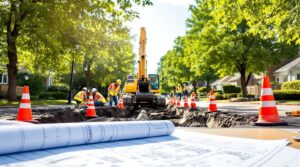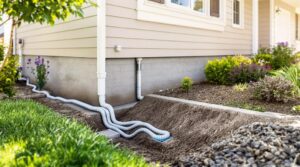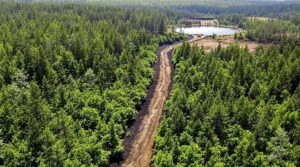Sinkhole damage mitigation strategies are critical for protecting communities in karst regions. Understanding the geological processes and human activities that contribute to sinkhole formation informs effective mitigation efforts. Continuous ground surveying and monitoring of groundwater levels aid early detection and prevention. Collaboration between scientists and local authorities enhances the effectiveness of mitigation efforts. To guarantee thorough protection and navigate complex insurance claims, a thorough understanding of sinkhole mitigation strategies and expert guidance is essential for safeguarding communities.
Key Takeaways
- Early detection and preventative measures are critical for mitigating sinkhole risks through continuous ground surveying and monitoring techniques.
- Understanding geological factors and triggers, such as karst topography and changes in groundwater levels, informs effective mitigation strategies.
- Regular assessments of groundwater levels and land subsidence monitoring aid in identifying potential sinkhole formation risks.
- Collaboration between scientists, local authorities, and experts enhances the effectiveness of mitigation efforts and ensures thorough compensation for damages.
- Public adjusters provide expertise in navigating complex insurance claims related to sinkhole damage, often resulting in higher claim payouts and settlements.
Understanding Sinkholes
While often perceived as sudden and unpredictable events, sinkholes are a natural consequence of long-term geological processes, particularly in karst regions where soluble rocks such as limestone, dolomite, and gypsum dominate the landscape.
These regions' unique geological conditions, characterized by the presence of soluble rock, play a vital role in sinkhole formation. The dissolution of these rocks by acidic water can lead to the creation of underground cavities, which can eventually collapse, forming sinkholes.
Understanding the geological conditions that contribute to sinkhole formation is essential for mitigating their impacts. By recognizing the potential for sinkhole formation in karst regions, individuals and communities can take proactive steps to minimize the risks associated with these natural events.
Causes and Signs of Sinkhole Formation
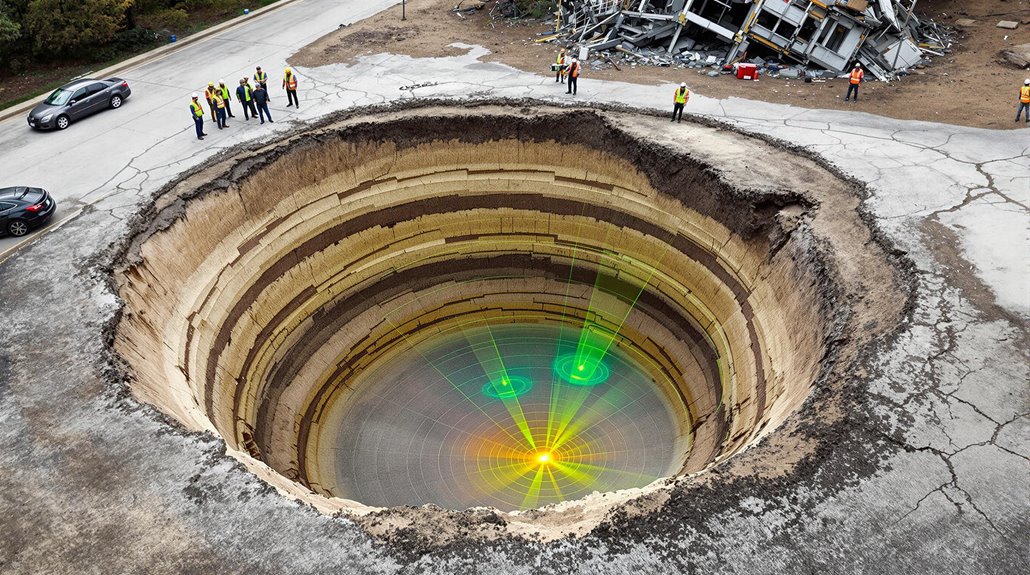
Due to the complex interplay of geological processes that govern sinkhole formation, understanding the various causes and warning signs is indispensable for mitigating their destructive impacts.
Geological factors, such as karst topography and soluble rocks like limestone, contribute to the development of sinkholes. Sinkhole triggers, including changes in groundwater levels, heavy rainfall, and drought, can lead to increased instability in the ground.
Human activities, such as construction and mining, can disrupt natural geological conditions, increasing the likelihood of sinkhole formation.
Warning signs include localized ground subsidence, cracks in the ground or walls, and unexplained depressions or holes.
Regular monitoring and surveying techniques, like ground penetrating radar, can help identify early signs of sinkhole development, allowing for timely mitigation measures to be implemented.
Sinkhole Damage Impacts on Communities

As sinkholes become increasingly prevalent in densely populated areas, the detrimental consequences of their impacts on communities necessitate a detailed examination.
The sinkhole community impacts are multifaceted, posing significant structural safety concerns due to the potential for partial or complete structural collapses. These collapses can lead to substantial economic burdens, resulting from costly repairs, evacuations, and displacement of affected communities.
Furthermore, the risks to human safety are paramount, with rare instances of fatalities underscoring the severe dangers posed by sinkholes. Changes in groundwater levels, often caused by human activities such as mining or construction, can exacerbate the likelihood of sinkhole formation, further compromising community stability.
A thorough understanding of these impacts is essential to inform effective mitigation strategies.
Effective Sinkhole Mitigation Strategies

To effectively mitigate the destructive consequences of sinkholes, early detection and preventative measures are critical components of an all-encompassing strategy. Continuous ground surveying using techniques such as ground penetrating radar (GPR) is essential for early detection of sinkhole formation.
Space-based radar information from satellites enables broader monitoring of land subsidence and potential sinkhole development. Collaboration between scientists and local authorities enhances the effectiveness of sinkhole mitigation strategies, addressing community-specific geological conditions.
Regular assessments of groundwater levels inform communities about potential sinkhole risks. Effective sinkhole mitigation strategies also rely on community engagement, fostering awareness and cooperation among residents, authorities, and experts.
Community Preparedness and Response Planning
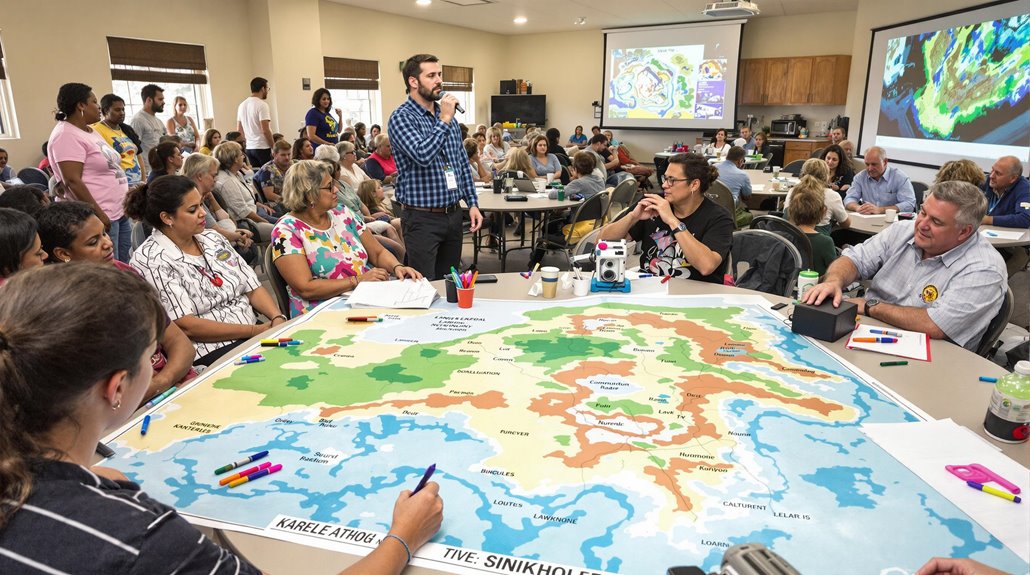
While community mitigation strategies play a crucial role in reducing sinkhole risks, the importance of preparedness and response planning cannot be overstated, particularly in karst regions where sinkhole formation can have devastating consequences.
Community preparedness and response planning empowers residents to respond effectively in the event of a sinkhole incident.
- Establish emergency response plans with evacuation routes and shelter locations.
- Conduct regular community education programs about sinkhole signs, such as ground cracks and unusual water pooling.
- Use ground penetrating radar to monitor underground conditions and identify at-risk areas.
- Collaborate with geological experts to develop preparedness plans considering unique local geological factors.
- Establish a communication strategy to inform residents about potential hazards and responses, enhancing community resilience and safety.
The Benefits Of Consulting A Public Adjuster
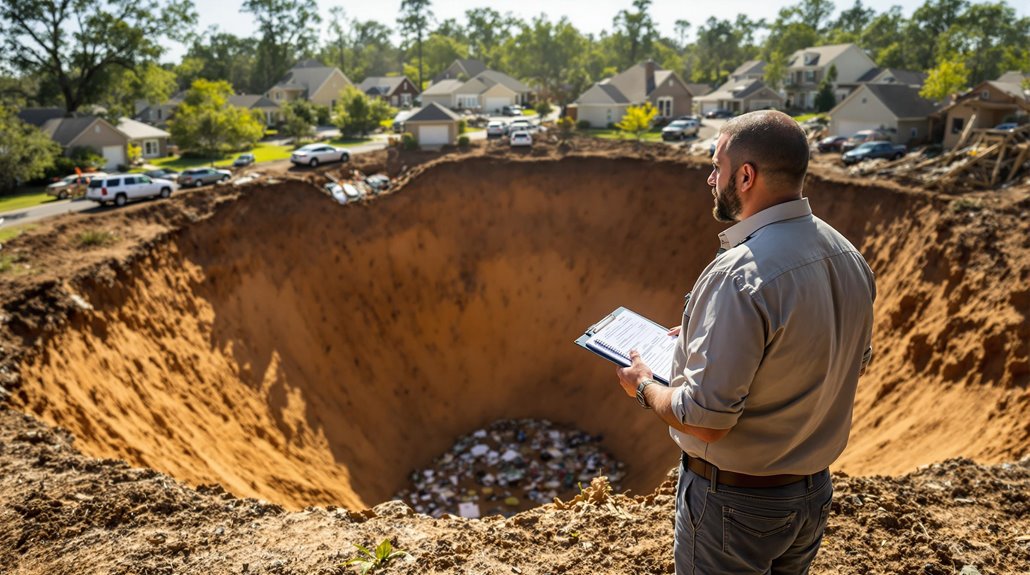
Consulting a public adjuster in the aftermath of sinkhole damage can provide policyholders with specialized expertise in maneuvering complex insurance claims.
By leveraging their knowledge of insurance policies and claims processes, public adjusters can provide an objective damage assessment, facilitating a more streamlined claim process.
This expertise often translates to higher claim payouts and settlements, a critical consideration for those seeking to mitigate the financial impact of sinkhole damage.
Studies show that public adjuster settlements can be up to 800% higher compared to independently filed insurance claims.
Expertise In Insurance Claims
When faced with the devastating impact of a sinkhole on their property, policyholders can greatly benefit from the specialized expertise of a public adjuster in managing the complexities of insurance claims.
A public adjuster's expertise includes:
- Accurate assessment and documentation of damage to guarantee fair settlements
- Expert analysis of insurance policies to identify covered losses
- Effective claim negotiation strategies to maximize settlements
- Expedited claims processing through familiarity with necessary documentation and communication with insurance adjusters
- Knowledge of local regulations and insurance practices to inform policyholders of their rights and options
Studies have shown that property owners who work with public adjusters achieve settlements up to 800% higher than those who handle claims independently.
Objective Damage Assessment
The specialized expertise of a public adjuster in managing insurance claims is complemented by their ability to conduct objective damage assessments, providing an extensive analysis of sinkhole damage.
By utilizing objective criteria and sophisticated assessment techniques, public adjusters can accurately identify and document the full scope of structural and property impacts. This all-encompassing approach guarantees that all sinkhole-related damage is accounted for, reducing the risk of under- or over-estimation of losses.
The public adjuster's expertise in damage assessment also facilitates the development of detailed reports and evidence, which are essential for substantiating insurance claims and optimizing compensation.
Working with a public adjuster can result in settlement increases up to 800% compared to handling claims independently.
Streamlined Claim Process
While managing the complexities of insurance claims can be a challenging task for homeowners affected by sinkhole damage, utilizing the expertise of a public adjuster can substantially streamline the claim process.
Public adjusters bring valuable knowledge in accurately evaluating damage, ensuring thorough claim documentation, and steering through insurance policies to identify additional coverage options.
With contingency-based fees, professional adjusters from reputable networks like PCAN work to maximize settlements without requiring upfront payments from policyholders.
Key benefits of consulting a public adjuster include:
- Expertise in accurately evaluating and documenting damage for insurance claims
- Ability to steer through complex insurance policies and identify additional coverage options
- Effective representation in insurance negotiations to expedite the settlement process
- Alleviation of stress associated with managing the claims process independently
- Provision of thorough reports to support quicker approvals and disbursements from insurance companies
Higher Claim Payouts & Settlements
As demonstrated by various studies, employing the services of a public adjuster can have a direct and significant impact on the outcome of insurance claims, particularly those related to sinkhole damage.
Public adjusters are experts in claim negotiation, possessing in-depth knowledge of insurance policies that enables them to identify additional coverage options often overlooked by policyholders. This expertise typically results in more thorough compensation for sinkhole-related damages.
Additionally, public adjusters can secure higher settlements than policyholders would achieve independently, with studies indicating settlements that are 20% to 50% higher. Their involvement facilitates settlement maximization, as they handle all communications with the insurance company, alleviating the policyholder's stress and allowing them to focus on recovery.
Engaging a public adjuster can be a worthwhile investment, considering their fees are based on a percentage of the claim amount.
Unlike attorneys who charge 30-40% contingency fees, public adjusters typically require only 5-20% of the final claim amount.
About The Public Claims Adjusters Network (PCAN)
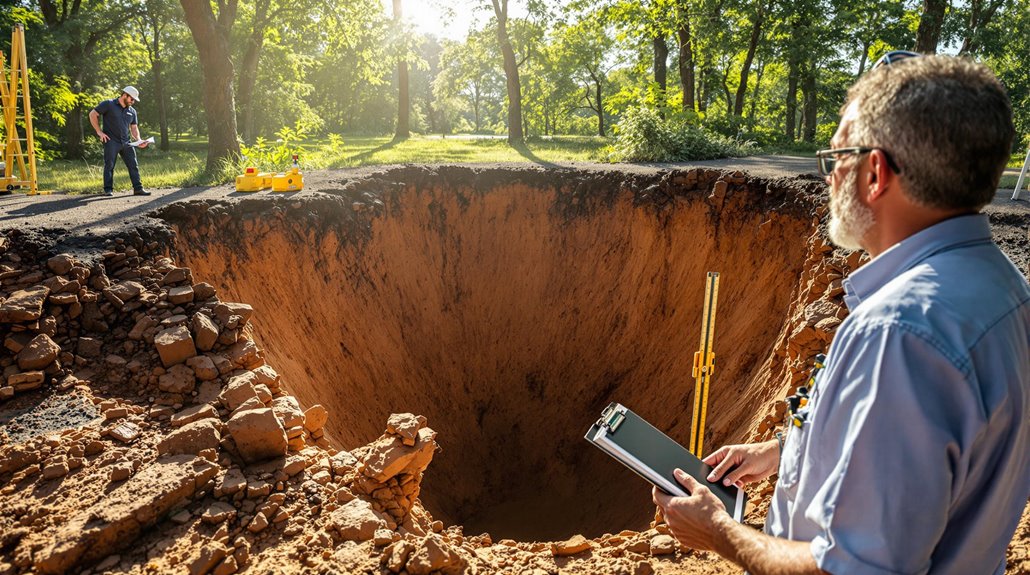
Public Claims Adjusters Network (PCAN) membership is comprised of a highly selective group of state-licensed public adjusters, thoroughly vetted for expertise in residential and commercial property damage insurance claims.
PCAN serves as a resource for policyholders to connect with expert public adjusters who are pre-vetted, licensed, and experts in their field.
The following highlights PCAN's extensive network and services:
- 30+ different claim types covered by member adjusters
- Adjusters located in 40+ states
- Mandatory yearly audits of licenses and complaints
- Expert public adjusters held to high standards of ethics, morals, and professionalism
- Resource for connecting top public adjusters with policyholders needing assistance
PCAN services provide insurance advocacy and expertise in maneuvering the complex claims process, ensuring policyholders receive fair settlements for their damages.
Working with public adjusters increases settlements by up to 800% compared to handling claims independently.
Frequently Asked Questions
What Are the Mitigation Strategies for Sinkholes?
Sinkhole mitigation strategies encompass sinkhole prevention techniques, including continuous ground monitoring, geological assessment, and predictive modeling. Effective measures involve collaboration between scientists and local authorities, leveraging space-based radar information, and public awareness campaigns to report anomalies.
How to Minimize Damage From Sinkholes?
Example: In Daisetta, Texas, timely sinkhole prevention measures, including property assessment and targeted repairs, mitigated significant damage. Similarly, thorough property assessments and sinkhole prevention strategies can help identify vulnerabilities, enabling proactive measures to minimize sinkhole-related damage.
What Precautions Should Be Taken During a Sinkhole?
During a sinkhole, prioritize sinkhole safety by evacuating the area immediately and notifying authorities. Emergency preparedness measures, such as having a response plan and emergency contact information, should be in place to minimize risks and guarantee public safety.
Does Homeowners Insurance Cover Sinkhole Damage?
Homeowners insurance policies typically exclude sinkhole damage, but some policies may offer sinkhole coverage with specific endorsements or riders, often with strict coverage limits, requiring homeowners to carefully review policy terms and conditions.




